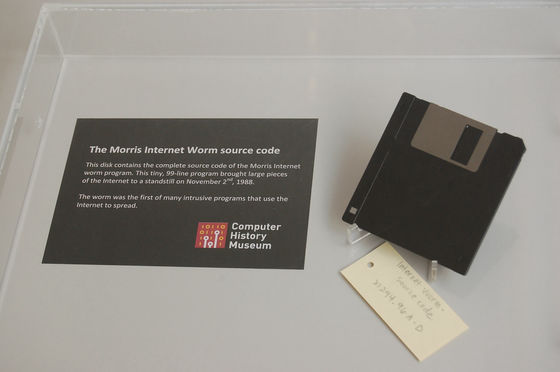'A History of Hacking' that shows the history of hacking, such as 'The world's first hack was done more than 100 years ago'

by
With the spread of PCs and the Internet, the terms 'hacker' and 'hacking' have become popular in recent years, but the fact that the world's first hacking took place more than a century ago is not so common. Not known. Also, the word 'hacker' has the impression that it is a bad guy who invades computers and networks and causes enormous damage, but there are also hackers who aim to find system security vulnerabilities and prevent damage. To do. Even before the birth of the Internet, such hackers intercepted communication equipment and electric counting machines to hack various information.
A History of Hacking --IEEE --The Institute
http://theinstitute.ieee.org/technology-focus/technology-history/a-history-of-hacking

◆ The world's first hack
The radio was developed by the Italian-born physicist
Fearing Marconi's invention, the telecommunications industry begins to devise measures to counter wireless telegraphy. British telegraph company Eastern Telegraph (now Cable & Wireless Communications ) has decided to hire British illusionist and inventor John Nevil Maskelyne to counter Marconi's invention. Maskelyne conducted experiments on wireless technology and succeeded in intercepting the communication contents even when Marconi's radio was communicating without knowing the frequency.
In 1903 Marconi conducted the first public experiment of a radio in London. The content of the experiment was whether it was possible to receive wireless communication sent from a distance of about 500 km using Marconi's radio. However, before receiving the message prepared by Marconi, a situation occurred in which a message that made Marconi laugh was heard from the radio, and this incident is said to be the world's first hack.
After being hacked, Marconi sent a letter to The Times protesting that 'hacking is a violent act of science and technology,' asking readers to help find the culprit. Four days later, The Times published a statement by Maskelyne. Confession that 'It was Masquerin himself who interrupted the message on Marconi's radio' and Masquerin's claim that 'Hacking at the public experiment was able to expose security flaws' And this hack wasn't done maliciously, it was worth revealing the fact that the security aspects of wireless telegraphy were unstable and anyone could easily intercept wireless communications. is.

by
◆ Hacking that saved lives
In 1940, when the Nazis occupied France, Rene Camille , a punched card expert and engaged in the French army, encounters a chance to save Jews in France. He was in charge of the French demographic department and managed the punching machine for making statistical data. After the Nazi invasion, when the occupying forces requested demographic data across France, Camille offered to output the statistical data on a punching machine. Since the religion that each French citizen worshiped was clearly stated in the statistical data, the occupation forces tried to identify the area where many Jews lived based on the data and send the Jews to the concentration camp. I was there.
Camille was also a spy on the French Resistance group , so he deliberately delayed the date of handing over the statistics to the occupying forces, and hacked the punching machine to rewrite the machine's program to prevent religion from appearing in the statistics. Camille, along with his colleagues, also found veterans from statistical data and recruited them into resistance groups. The Occupation Army noticed Camille's work in 1944, when he was detained and imprisoned in a German concentration camp and died in the camp the following year, but within five years. Camille saved the lives of many Jews.

by
◆ The world's first malware
In 1988, the code for the world's first computer worm was written by American computer scientist Robert T. Morris , a 23-year-old student at Cornell University at the time. The worm made by Morris was released from MIT's computer on November 2, 1988 and spread all over the world via the Internet, but once the worm invaded the PC, it was overwritten many times and the machine moved. Due to the interference, 10% of the PCs connected to the Internet, about 6000 machines, became unavailable. It is estimated that the worm has damaged universities, research facilities, military bases, etc. in the United States, and the total damage amounted to 10 million dollars (about 2.5 billion yen at that time).
Following the attack by the Morris Worm, the Defense Advanced Research Projects Agency established CERT as an Internet security countermeasure team in the United States, and it can be said that the Morris Worm has raised public awareness about Internet security. Morris was also the first person to be tried under the Computer Fraud and Fraud Control Act, which was just passed in 1986, with a three-year suspended sentence and $ 10,50 (at that time) on June 26, 1989. I was sentenced to a fine of about 1.4 million yen (value). Morris then co-founded Viaweb , one of the first application service providers in history, and Viaweb was Yahoo! in 2005 for $ 49 million (about 5.4 billion yen at the time). Since being acquired by MIT, he has been working as a professor of electronic engineering and computer science at MIT, which was once the source of worms.
A floppy disk containing the Morris worm, commonly known as the 'Morris Worm' code, is currently on display at the Computer History Museum in California.

Related Posts:
in Note, Posted by darkhorse_log







